
Planted Torreya Trees in Florida Panhandle
outside of Torreya State Park
1. Mature Torreya of Madison, FL

2. Shoal Sanctuary (Florida Panhandle)
Nurturance of Torreya taxifolia

Site visit to Shoal Sanctuary, due west of Torreya's peak glacial refuge in northern Florida. Documentation of 9 seedlings thriving (and remarkably free of herbivory) four years after a total of 40 seeds were placed directly into the coolest, moistest habitats. Distinctions among the sites portend excellent learnings of site preferences in the years ahead. 24 minutes - filmed January 30, 2019
Chris Larson of Shoal Sanctuary, Florida, shows the four Torreya trees thriving since their planting in 2001. Of note: (1) only one tree has grown reproductive structures (male); (2) one survived a severe burn amid the longleaf pines; (3) all are thriving in nearly full sunlight on sandy soils; (4) agricultural lime is applied only rarely (when the evergreen leaves show yellowing); and (5) all four specimens are watered twice weekly.
10 minutes - published February 17, 2015.
Connie Barlow identifies sites for 18 seeds of Torreya taxifolia to be planted in the moist, cool habitat of Grotto Ravine, within Shoal Sanctuary, Florida. Connie walks with camera through the ravine, speaking about why this spring-fed sandstone ravine in the Florida panhandle might be the best place for Florida Torreya to make a last stand in its home state.
28 minutes - published February 21, 2015.
In March 2015 Chris Larson organized groups of scout, church, and other youth to plant seeds of Torreya taxifolia that were donated for this purpose by Torreya Guardians.
Click for Full-page photo-essay. 1475 Crowder Chapel Road, Mossy Head, FL 32434
3. SW Escambia County
I attach 2 photos of my torreya that I planted about a year ago. The plant came from Dod & Dod Nursery in Semmes, AL. They are propagated from lateral cuttings. I am located in extreme SW Escambia County, FL about 180 miles west of Torreya State Park. The overstory here are mature laurel oak and live oak. Saw Palmetto comprises the ground cover, with blueberries and devilwood the understory. Typically dry sand pine, oak flatwoods, although I have many areas heavily composted with home made compost. Lat/Long for this torreya is 30 20 03.37 N and 87 20 06.77 W at a 20 foot elevation. I doubt this area ever planted in cotton, so I am hopeful the soil pathogen is not in my soil. I do treat with HI-Yield Maneb in Feb and June as a precaution.
May 2013
April 2014
ABOVE: Photos onsite December 2022 by Clint Bancroft, who was searching in particular as to whether any vertically orienting growth from this horizontally growing rooted branchlet will ever develop into a tree leader, and thus potentially produce a tree-form rather than the existing shrub. (Note the white area is the spot of sunlight hitting the shrub.) Clint wrote:
Return to HOME PAGE
Annotated List of Papers/Reports Online re Assisted Migration
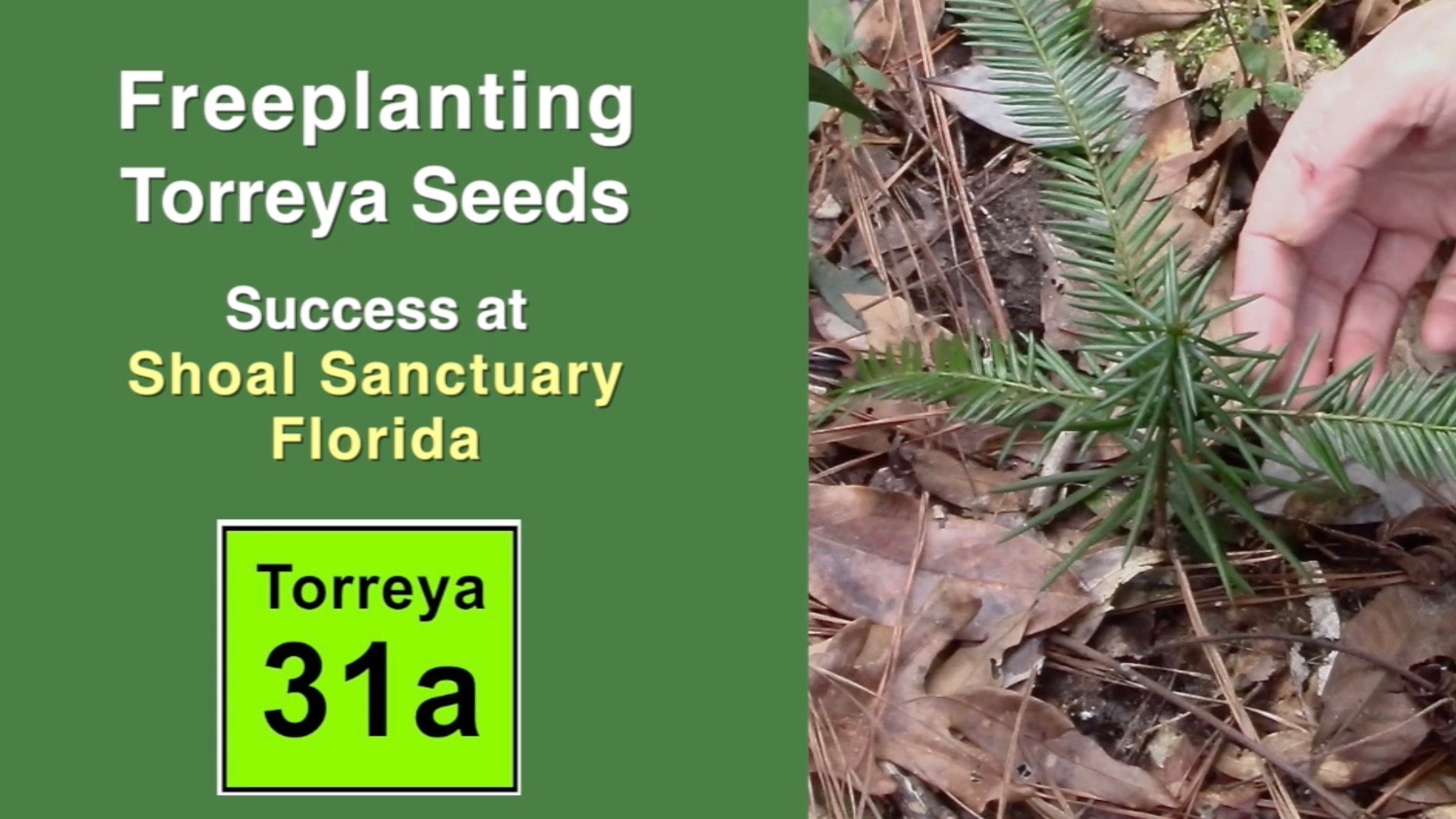
VIDEO 2019 - 31a: Freeplanting Torreya Seeds - Shoal Sanctuary FL pt 1 of 2
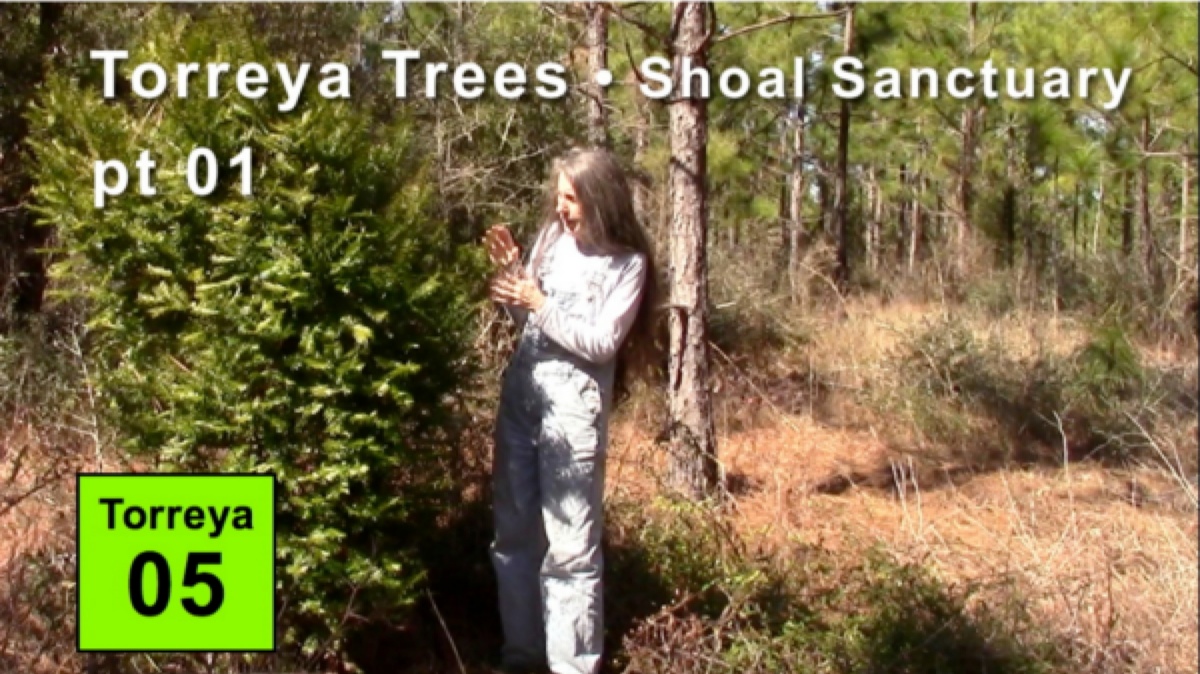
VIDEO 2015-A: Torreya Trees at Shoal Sanctuary FL: Four Torreyas on Sandy Uplands
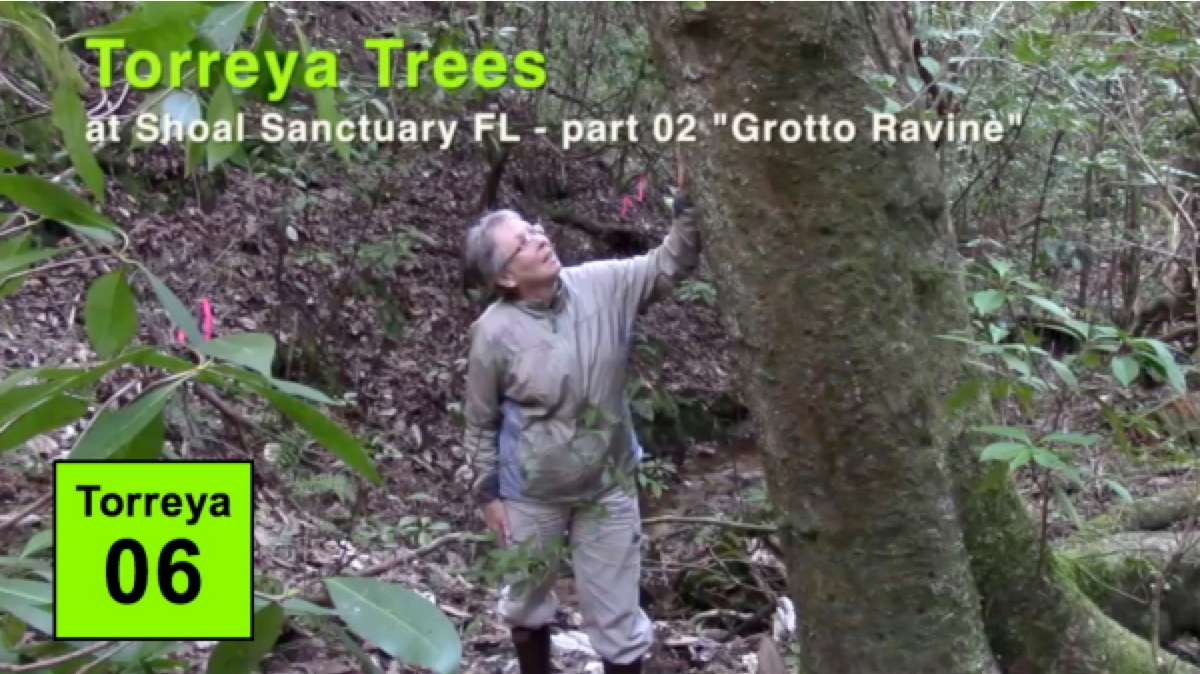
VIDEO 2015-B: Torreya Trees at Shoal Sanctuary FL: Grotto Ravine (preparing to plant seeds)
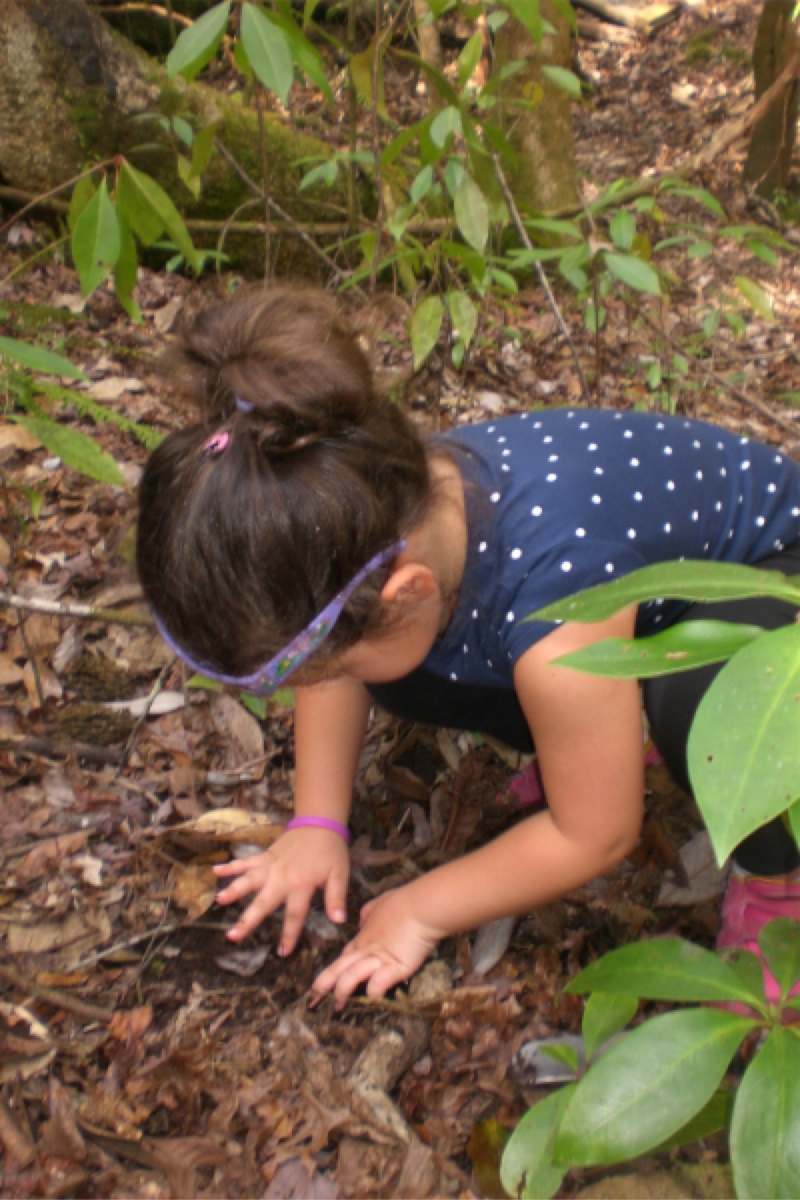
PHOTO-ESSAY: Children Plant Seeds of Endangered Tree at Shoal Sanctuary
180 miles west of Torreya State Park, FL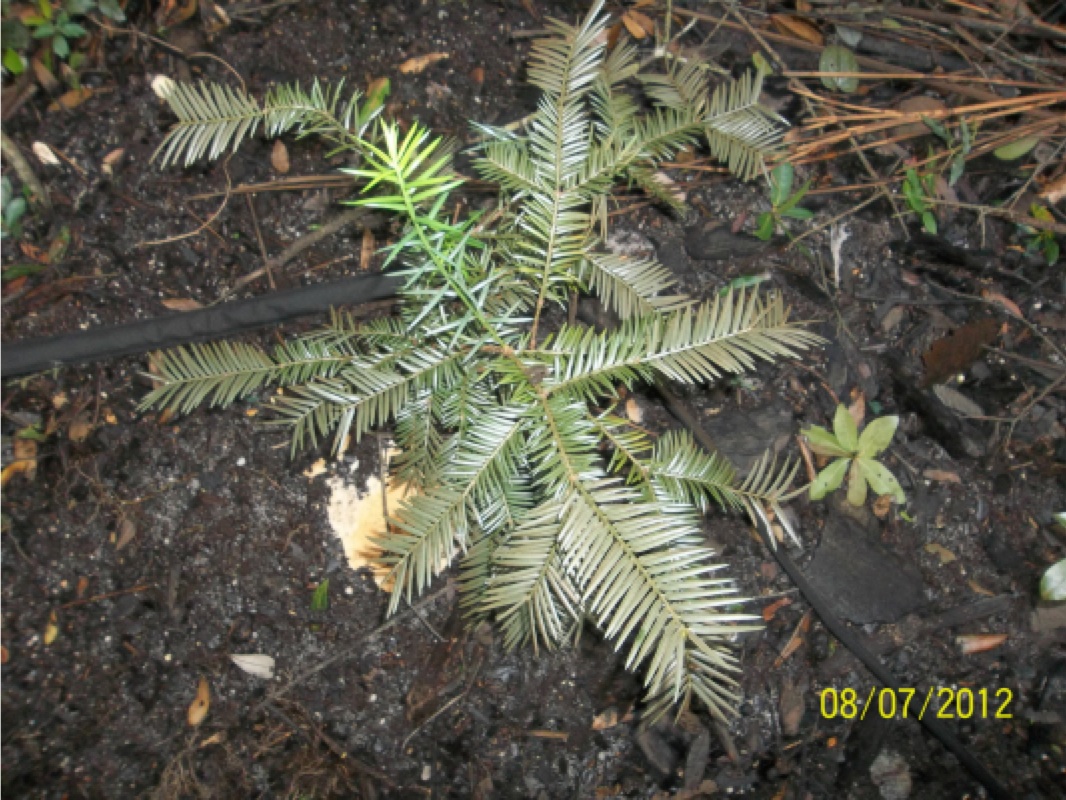
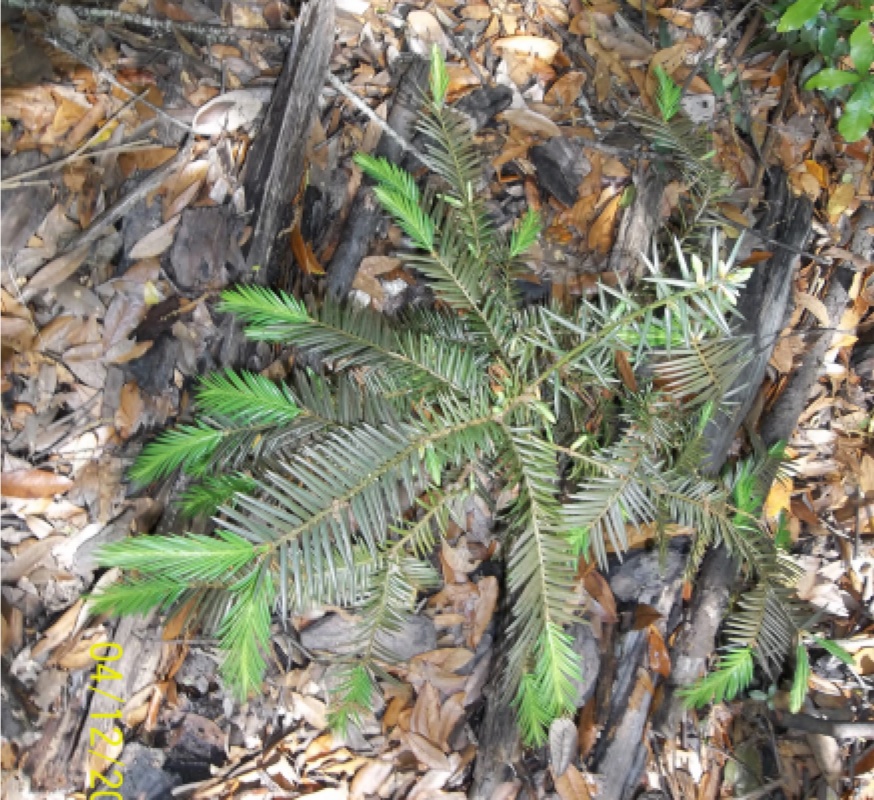
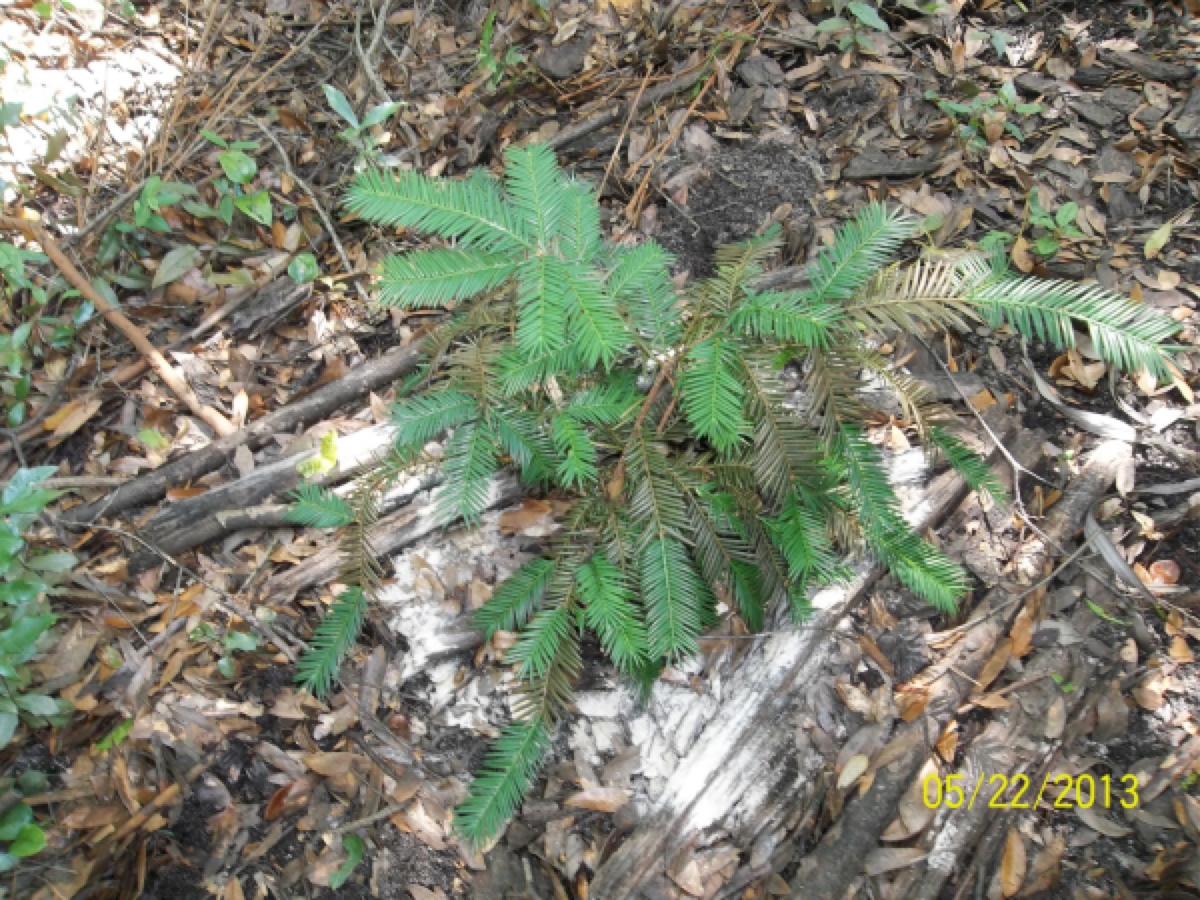
LEFT: "The T. taxifolia still looks good I think
with decent spring growth. I periodically use
ag lime maybe twice a month. I use a
water soluble general fertilizer every 10 days
until end of May. I will treat soil and leaves
with Hi-Yield Maneb in June. This will be
its second growing season at this site."
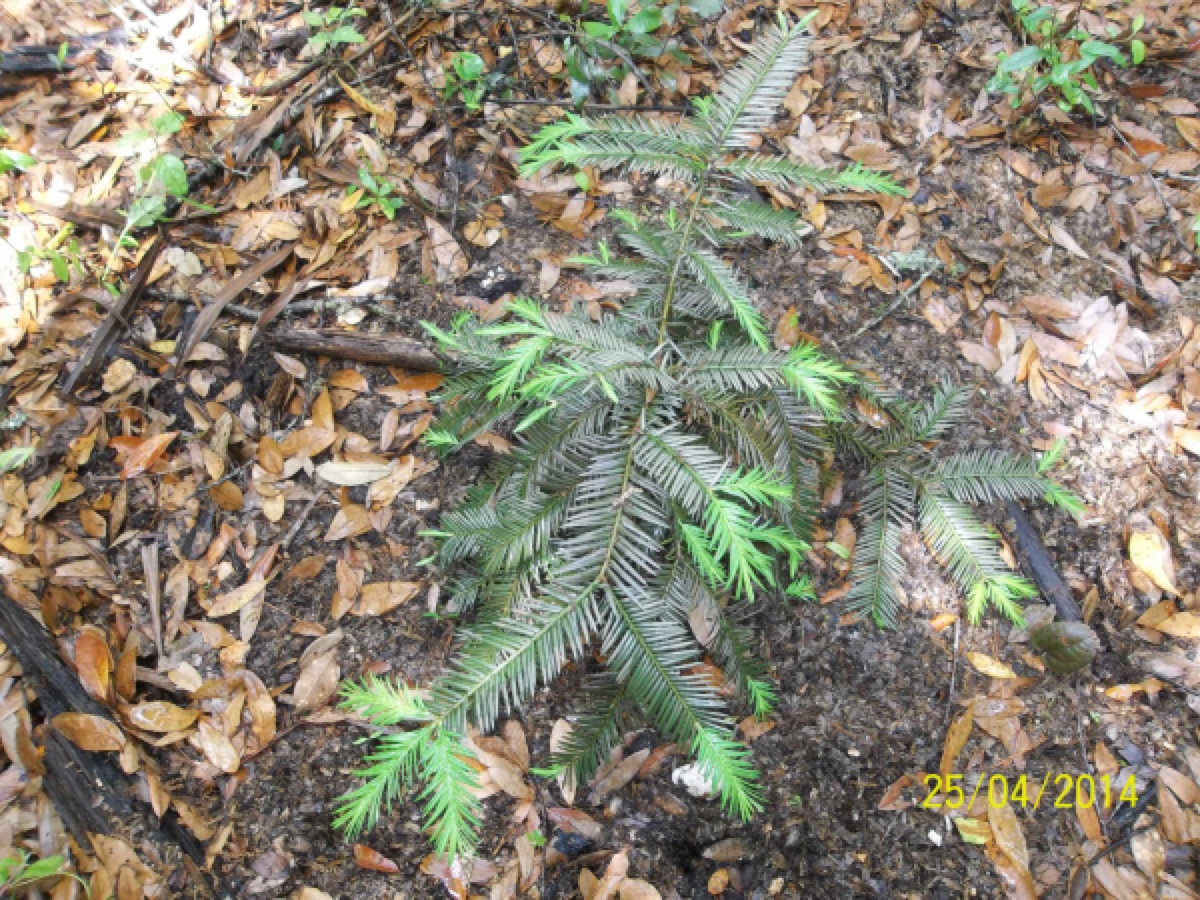
LEFT: "The torreya still looks good I think. I treat the soil with Hi-Yield Maneb fungicide in February, late March, and finally in May. I fertilize with Miracle Grow water-soluable fertilizer from March thru June. I also use ag lime around the root base any time during the year. This should be the start of its fourth growing season at this location. Slow grower indeed." 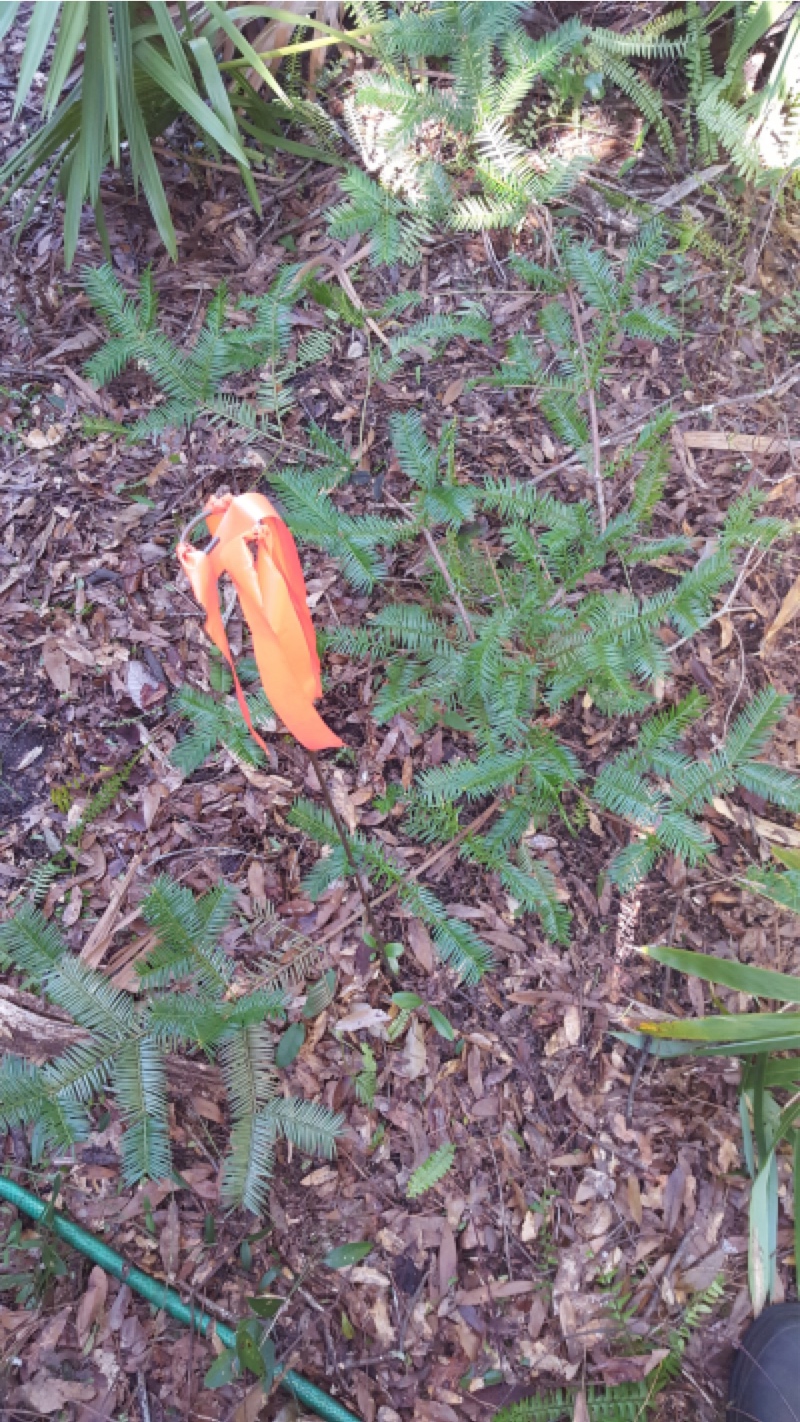
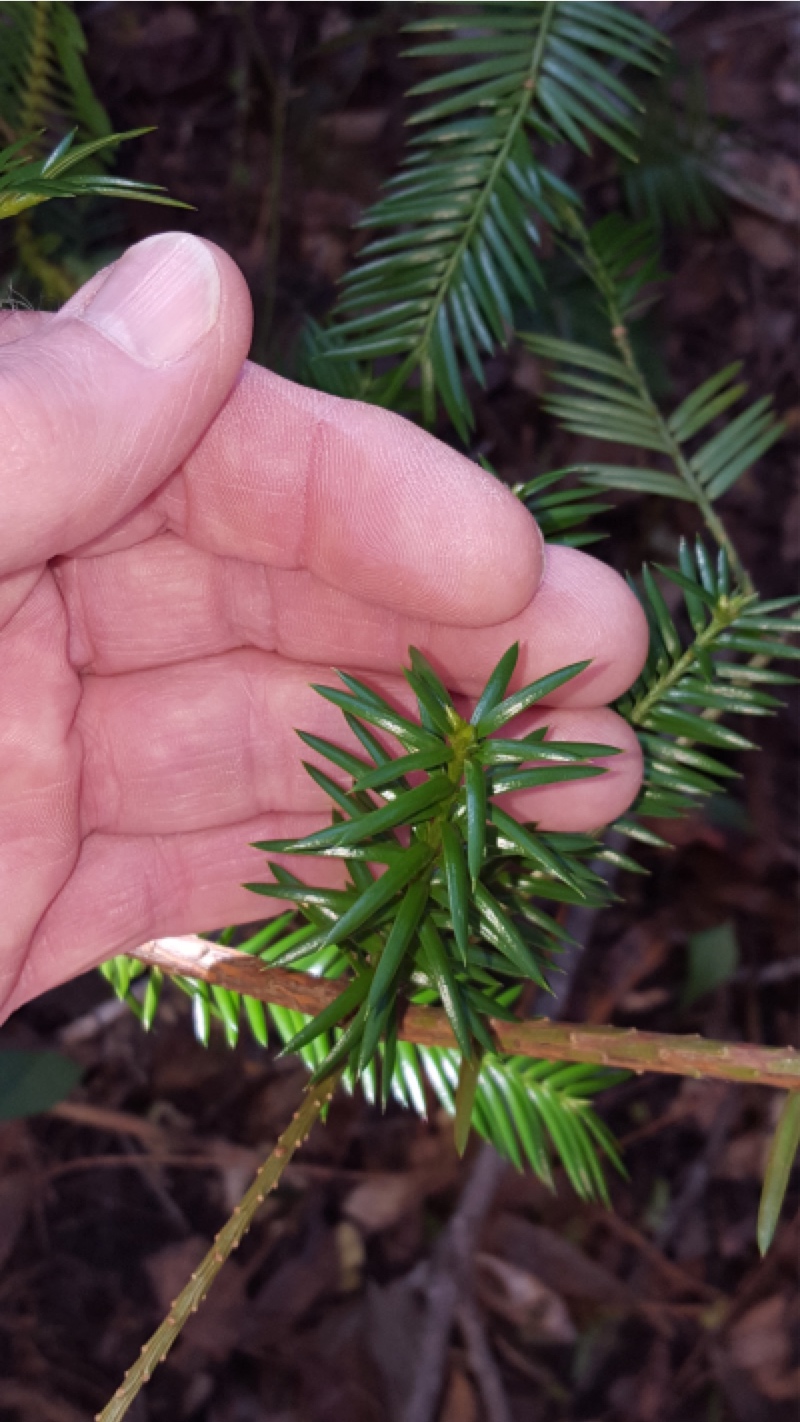
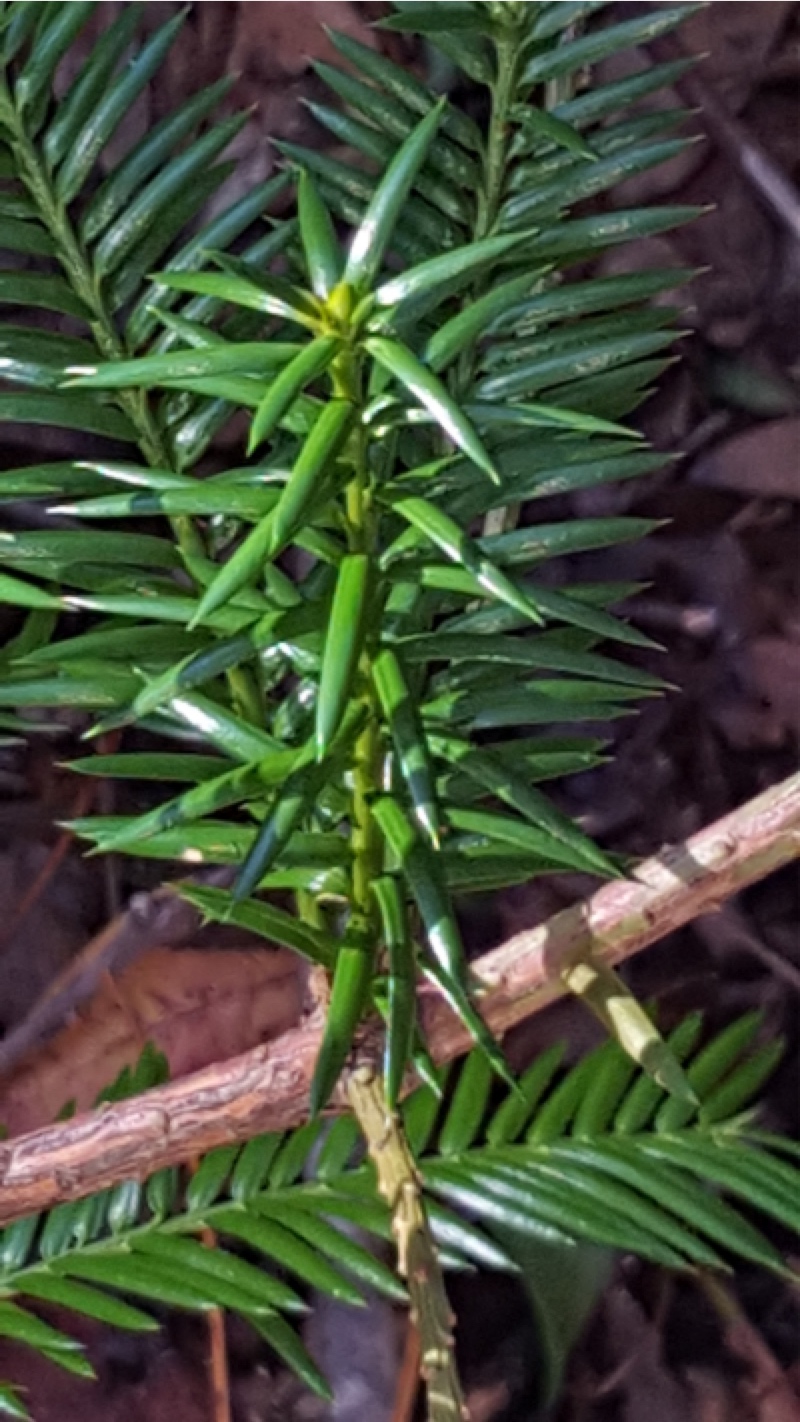
His "tree" actually has 3 main branches instead of one trunk — as I had thought previously. There is such an overgrowth around the tree that makes it difficult to observe closely. He had pulled Boston ferns from around it, else it would hardly have been visible at all. Their yard is quite wild. Last year, during my visit, I took cuttings of his vertical growth, but left 2 intact in order to see what they would do in a year. The result is that one seems to have disappeared, and one was still present and looking healthy. It still has a vertical form. I tried to get a close-up of it, but I was not satisfied with the picture. The shot of my hand cupping it is perhaps the best view.